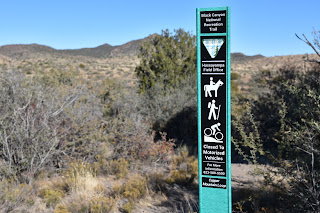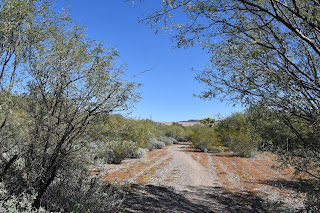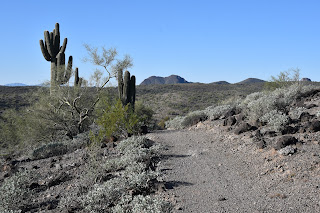PYRAMID
CIRCUITA juniper tree on Pyramid-Scorpion Loop
Prominent
in the landscape and aptly named, the
4,498-foot conical sandstone formation known as the Pyramid serves as a
focal point for the Carrol Canyon Area Trails on the west side of Sedona.Route circles the Pyramid rock formation
Located
south of State Route 89A and north of Oak Creek the iconic landform can be
explored using a short loop circuit with options to add length and challenge by
linking up with connecting trails. A tight passage on Pyramid-Scorpion Loop
Access to
the loop hike in the deeply incised, conifer-flecked pocket of Coconino
National Forest starts at the Pyramid trailhead which is just a no-frills dirt
pullout along Upper Red Rock Loop. The spartan trailhead sets the mood for a
quiet, remote-feeling trek with alternative peeks at some of Sedona’s most familiar
land features. Pyramid trailhead sign post
Decision making begins right out of the gate, where, after a few
yards, the access path splits into two trails that make up the 2.2-mile Pyramid-Scorpion
Loop. Either direction works but taking
the south Pyramid leg gets the heavy lifting out of the way early. The 1.2-mile
leg traces the base of the eponymous stone edifice on an uneven, boulder-strewn
singletrack. Munds Mountain seen from Pyramid Trail
Without signs to guide most
of the way, the route is sketchy and somewhat difficult to follow where is
crosses slick rock and drainages. In those head-scratcher spots, hikers can maintain
their bearings by paying attention to branches placed to block false starts and
by looking ahead to scope out where the obvious trail picks up. Patience and observation
skills will solve the conundrums. Rife
with tight bends and edgy drop offs, the Pyramid leg of the loop unpacks views
of Cathedral Rock, Munds Mountain, Oak Creek, and the towering mound of Capitol
Butte also known as Thunder Mountain. At
the Scorpion Trail junction, the loop may be tied up by heading right and
trudging just under a mile on the return leg back to the start point. Extend the hike on Scheurman Mountain Trail
But to
add length and some truly majestic views, save the return segment for the end
and instead, keep going north on the Scorpion Trail. View from Scheurman Mountain Vista
This 1.1-mile segment teethers on the lip of
a shallow canyon beneath Scheurman Mountain with the sinuous course of Upper
Red Rock Loop below. The trail makes a gradual ascent adding views of the Bradshaw
Mountains, Airport Mesa, and the Cockscomb formation. Near the top of the climb,
the route connects with the Scheurman Mountain and Vista trails. Signs point the way to the scenic vista tat
teeters over a stunning a red rock landscape. Bradshaw Mountains seen from Scheurman Mountain
The vista makes for a good turnaround
point but forest maps show many ways to customize an even longer trek.
LENGTH:
Pyramid-Scorpion Loop: 2.2 miles
Pyramid-Scorpion Loop with Scheurman Mountain Vista: 6 miles round trip
RATING: moderate -difficult
ELEVATION:
Loop: 4,050 – 4,475 feet
Loop + Vista: 4,060 – 4,815 feet
GETTING THERE:
Pyramid trailhead:
From the State Route 179/89A traffic circle in Sedona, go 4 miles west (toward Cottonwood) on SR 89A to Upper Red Rock Loop. Turn left and continue 1.8 miles to the Chavez Ranch Road (Forest Road 216A) junction. The trailhead is on the right. There are no facilities at the trailhead.





























































